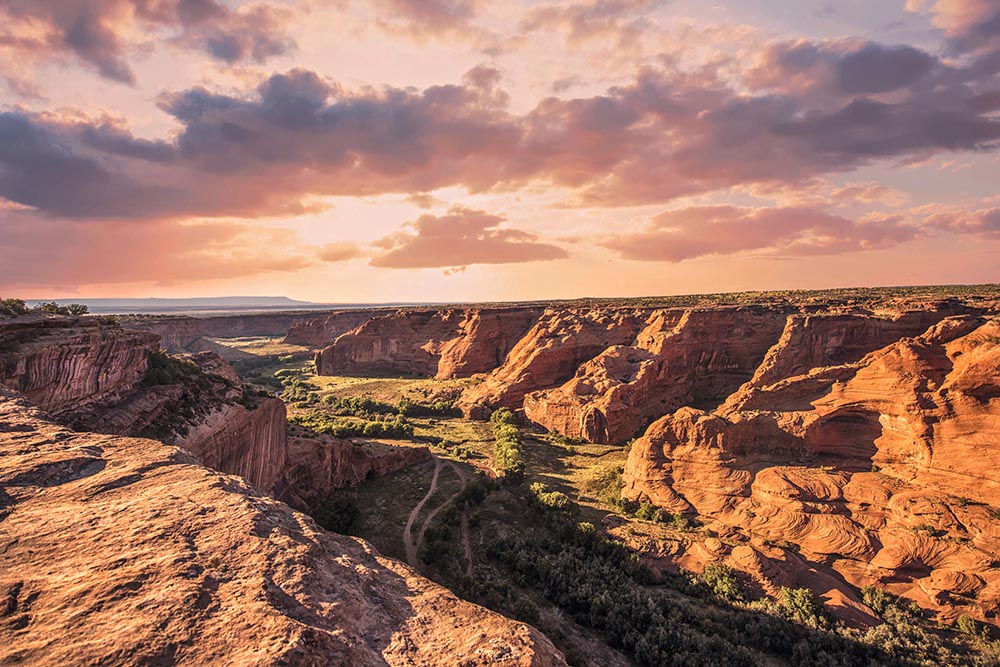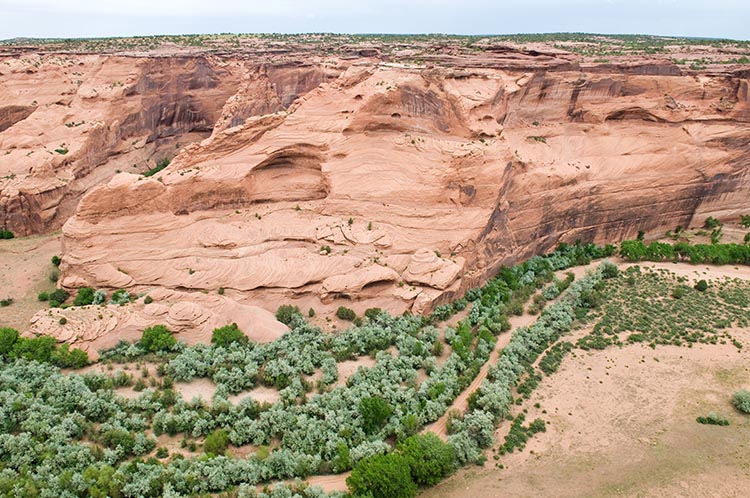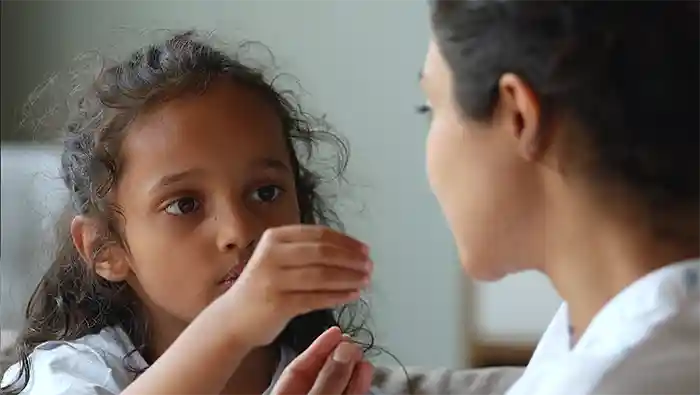What Are Languages 4? Blog
The Integration of Traditional Navajo Horticulture into Language and Cultural Education

April 16, 2024
The Integration of Traditional Navajo Horticulture into Language and Cultural Education
In the vast, arid landscapes of the Southwest, the Navajo people have cultivated a deep relationship with their environment, mastering the art of agriculture in a region where water is precious and the land sculpts life. This article explores how traditional Navajo horticultural practices, particularly those involving the culturally significant peach orchards at Canyon de Chelly, are being revived and integrated into language and cultural education, bridging past and present to nourish future generations.
Traditional Navajo Peach Horticulture
With its storied peach orchards, Canyon de Chelly stands as a testament to the resilience and agricultural expertise of the Navajo people. Initially planted in the 1700s, with support from the nearby Hopi Tribe, these orchards became central to the community's economy and cultural practices, including ceremonies and trade. (Jett, 1979) Despite historical challenges, including destruction during conflicts and environmental pressures, the Navajo have maintained a connection to these orchards, passing down knowledge and practices that modern Navajo scientists like Reagan Wytsalucy are now revitalizing.
Wytsalucy's work focuses on restoring the traditional peach varieties once prevalent in the region. Her research combines scientific methods with traditional knowledge, uncovering these ancient crops' genetic, nutritional, and cultural significance (Dolan et al., 2022).
Cultural Significance and Language Revitalization
The revival of traditional peach orchards is deeply intertwined with Navajo cultural identity and language. The Navajo word for peach, "Diné didzétsoh," encapsulates more than just a fruit; it embodies a connection to ancestral land and practices. By reintroducing these traditional peaches and their Navajo names into educational programs, there is a profound opportunity to enrich language learning, making it a more immersive experience that respects and perpetuates Navajo heritage.
Integrating Ecosystem Knowledge into Education
Integrating traditional ecological knowledge into educational systems serves as a bridge between generations. For the Navajo, this includes understanding the relationships between soil types, water sources, and plant life, expressed through their language and stories. Language programs incorporating these elements teach vocabulary and connect students to their environmental heritage, promoting sustainability and respect for the land.
 Canyon De Chelly - Harris Shiffman
Canyon De Chelly - Harris Shiffman
Horticulture: a Profound Example of Land-Based Education
Land-based education, often described as "on the land" learning, profoundly resonates with the practices and cultural teachings of the Navajo at Canyon de Chelly. This educational approach, which emphasizes a profound connection to the land and its resources, perfectly exemplifies the Navajo's cultivation and revitalization of peach orchards. These practices are not only about growing peaches but also about nurturing a connection to the land that supports spiritual, cultural, and community well-being.
As land-based education seeks to integrate Indigenous knowledge systems into learning experiences, the Navajo community uses these orchards to teach younger generations about their history, language, and traditions. The orchards serve as living classrooms where the land becomes a teacher—illustrating lessons on ecology, botany, and the ethics of care and respect for the environment.
By restoring traditional peach varieties, which are culturally and historically significant, educators and community leaders can provide a tangible experience of land-based education. This approach aligns with the broader goals of Language 4 projects, which aim to engage learners with Indigenous thought systems and reconnect them with their ancestral lands. The work done in these orchards embodies the scaffolded immersion pedagogy by breaking down complex ecological and linguistic concepts into manageable, engaging learning activities that progress from essential vocabulary acquisition to more profound, more integrated dialogues about cultural and environmental stewardship.
By incorporating these traditional horticultural practices into the curriculum, Navajo educators ensure that the language and teachings passed down through generations are preserved and adapted to meet the challenges of the modern world, reinforcing the community's identity and continuity.
Challenges and Opportunities
The challenges facing restoring traditional practices are significant, from climate change impacting growing conditions to the need for educational resources that accurately represent Navajo ecological knowledge. However, the work of individuals like Wytsalucy and collaborations with organizations like the National Park Service present opportunities to overcome these obstacles. Through her efforts, traditional peach orchards are a source of nutrition and a living classroom for Navajo youth (Dolan et al., 2022).
As we look to the future, integrating traditional Navajo horticultural practices into language and cultural education can enrich learning experiences, preserve biodiversity, and strengthen community resilience. The peach trees of Canyon de Chelly, with their deep roots and resilient nature, symbolize the Navajo people's enduring connection to their land and culture, offering sweet lessons of the past to nourish future generations.
Citations
Dolan, S., Wytsalucy, R., & Lyons, K. (2022). How a Navajo Scientist Is Helping to Restore Traditional Peach Horticulture. Park Science, 36(1).
Jett, Stephen C. "Peach Cultivation and Use Among the Canyon de Chelly Navajo." Economic Botany, vol. 33, no. 3, 1979, pp. 298-310. The New York Botanical Garden,
Connect With Us
Follow our journey, share your thoughts, and participate in the conversation. Let's keep languages vibrant together.
Languages 4™ is more than a tool; it's a partner in the mission of preserving and revitalizing Indigenous languages. We invite reach out to us explore how our platform can support your language teaching goals. [Join the Conversation 📩 Subscribe to our Newsletter ] and take a step towards sustaining the rich heritage of Indigenous languages.

Tim O'Hagan
Founder and President, Languages 4®
Ready to embark on this transformative linguistic journey? Dive in and experience the confluence of tradition and innovation as we reimagine the future of Indigenous language learning.
[Join the Conversation to Subscribe to our Newsletter ]
